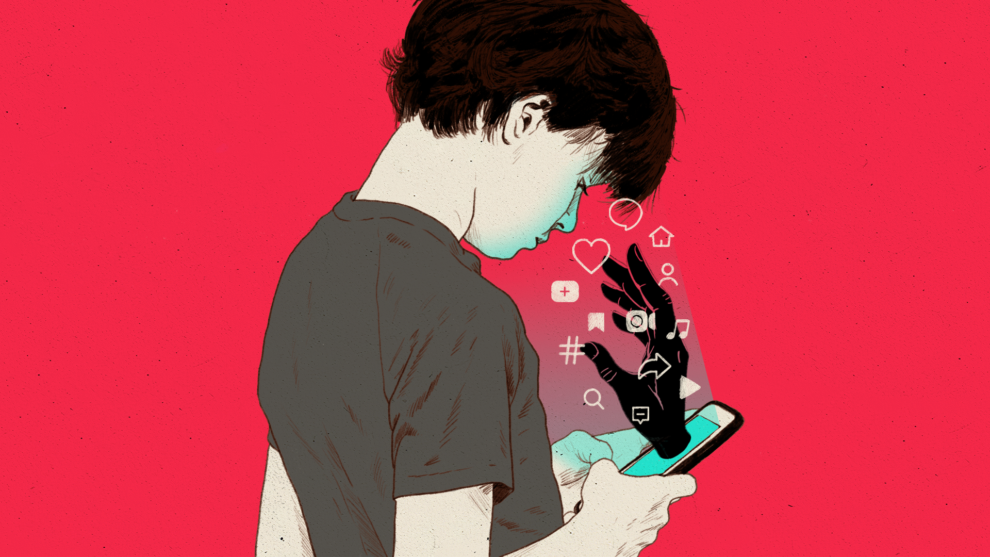In November last year, Vesna Radovic went to the management of her daughter’s elementary school in the Montenegrin capital Podgorica to report that her fifth-grade child was being “continually insulted” by another pupil.
“When we reported the insults to the teacher, the boy began threatening her,” Radovic told BIRN. “We had two meetings with school management and his parents, but despite a mutual agreement, the bullying continued.”
Aware that her daughter was not the only victim, Radovic said she proposed to other parents that they conduct an anonymous survey of the class, but they refused. “After almost a year of struggling to protect my daughter, in the end I had to move her to another school.”
The story is a familiar one across the countries of the Balkans, BIRN has found.
According to a survey conducted in 10 Balkan countries, out of a total of 34 parents surveyed, 19 said their child or children had suffered from school violence; the vast majority experienced physical violence, sometimes accompanied by other forms of violence.
According to BIRN’s findings:
- 84.2 per cent of parents surveyed said their children were exposed to physical violence, alone or as part of a “package” with other types of violence.
- 89.5 per cent said the perpetrators of the violence were classmates of their child or children.
- Some 59 per cent of parents whose children experienced violence said no measures were taken to protect them.
- While all teachers surveyed said they know how to recognise violence at school, some 29.4 per cent do not see, for example, lifting a girl’s skirt, pinching girls, grabbing girls, or pulling girls by the hair as violence.
While acknowledging that violence, particularly among children, is a complex social problem, Jelena Vranjesevic, a professor at the Faculty of Philosophy, University of Belgrade, said a major issue among educators is a failure to keep a close eye on the children and young adults they teach.
“I think the important thing is that we actually keep an eye on the children, first to see which child is the favourite, which child is excluded, why that child is excluded, in what way they are excluded, which child is distracted, which child behaved in one way and now is behaving unusually, in which child we see a change,” Vranjesevic told BIRN. “It is necessary to monitor and then talk and then react.”
Mostly physical violence

In a case in Bosnia and Herzegovina, a woman from Sarajevo, who asked not to be named, said the violence directed at her son began near the end of fourth grade elementary school in Bosnia and Herzegovina.
“He was pushed from the bus, thrown to the ground, and punched in the stomach for the first time by a classmate, with whom my child had a really nice relationship until then,” the woman told BIRN. The school broke up for summer, but the violence resumed some two weeks into fifth grade.
Eventually, the classmate and several others wrote pretend obituaries for her son, describing him as “cursed”. According to the woman, CCTV footage at the school showed the children pretending to bury her son. She was called to the school and the principal showed her what the obituaries. “I sat down and read them, and I just started crying,” she told BIRN.
The Bosnian woman is one of 19 parents in the Balkans who said in the questionnaire that their child or children had been subjected to violence by peers.
Only 16 per cent said the violence was a one-off incident; all said the violence occurred at school. In 89.5 per cent of cases, classmates were the perpetrators.
BIRN calculated that in 84.2 per cent of cases, children were exposed to violence of a physical nature, alone or as part of “package” or other types of violence. Verbal violence occurred in 73.7 per cent of cases, while psychological violence, alone or alongside other types, happened in 68.4 per cent of cases.
Exclusion unrecognised

According to Zora Junusic, a pedagogue at Mladost Elementary School in Osijek, eastern Croatia, most of the violence suffered by children happens online, away from school and outside school hours. If often goes unreported. Social isolation of children by their classmates is particularly pervasive, she told BIRN.
“Our community is such that there is not so much [physical] violence, we mostly have it via the Internet, exclusion from groups, more social isolation of children, grouping within the class,” Junusic said.
It is difficult for children, she said, “especially for children in the most sensitive period; elementary school is the period when they are going through puberty and where they are focused on their peers and the most important thing for them is to be accepted.”
Some 35.3 per cent of teachers surveyed by BIRN do not recognise exclusion – from games, from classroom seating arrangements, birthdays or other activities – as violence.
Some 29.4 per cent do not see threats made online as violence; 41.2 per cent do not see teasing based on grades as violence; and 17.6 per cent do not see teasing based on the way a child dresses as violence.
Issues with schools recognising what constitutes violence could also been seen in the answers of parents.
A parent in North Macedonia said that when her six-year-old child experienced physical violence in the first grade of elementary school, “the authorities considered it something normal”.
Another, in Greece, whose child suffered a similar case of violence, said “teachers did not treat the issue with the required seriousness”.
According to Zorica Saljic, associate professor at the Faculty of Philosophy in Belgrade, in some cases teachers struggle to distinguish between children playing and children being violent, especially in the case of verbal violence.
“Then we run the risk of either overreacting and turning a problem that could be rectified in that initial phase into an even bigger problem, or letting it go, saying ‘It’s nothing’, and letting some elements slip through that are actually worrisome and lead to more serious forms,” Saljic said.
In such cases, how well a teacher knows their pupils can be important: “How much they can recognise, identify what is a joke or not in that behaviour, what their relationships are otherwise, of course, to talk to them about all that.”
As for violence with sexual connotations, some 29.4 per cent of teachers who responded to the BIRN survey said they do not see lifting a girl’s skirts, pinching girls, grabbing girls, or pulling them by the hair as violence; some 23.5 per cent said they do not see kissing or touching without consent as violence.
Adapt to effects of social networks
A teacher and school administrator in Istanbul, Turkey, said that violence among children aged 10-14 is rooted in a desire for love and attention.
“Parents do not care for their children as before,” she said on condition of anonymity. “So children go towards social media, which holds many dangers, and they see a world focussed on getting attention. Hence the process of denigrating others, calling them names, and labelling them begins.”
In Turkey in particular, the teacher said there had been an increase in violence targeting refugee and migrant children.
“The racist discourses following the wave of immigration and cultural conflicts after the events in [neighbouring] Syria further fuel young Turkish people in this regard,” she told BIRN.
Social media is frequently identified by teachers as a major cause of problematic behaviour among children.
In a previous investigation, some 87 per cent of teachers in the Balkans surveyed by BIRN said they are not aware of what their students are posting on TikTok and 82 per cent said they themselves do not use TikTok.
In BIRN’s latest survey, just 17.6 per cent of teachers said they are on TikTok, currently one of the most popular social networks among children. Some 41.2 per cent said they have only one social media account, on either Facebook or Instagram.
Vranjesevic said it is important that parents can be involved when their children first become exposed to social media.
“It is important for parents, especially of younger children, to be involved in it, in the sense of ‘Let’s see what’s there’, so that some content is also mediated by the parents, so that the child already acquires some orientation, some compass… [to see] what is okay and what is not okay.”
“We as adults now really need to make an effort to somehow modernise the way we teach something, the way we teach children, to simply adapt a little to the ways in which they learn the fastest and most effectively,” Vranjesevic told BIRN.
“This doesn’t mean that we will record ourselves all day on TikTok, but we shouldn’t give a chalk-board lecture from thick books and expect to have their undivided attention. We won’t get it.”
Need focus not just on academic achievement

Illustration, classroom in an elementary school in Belgrade, Serbia. Photo: EPA-EFE/ANDREJ CUKIC
A mass shooting by a 13-year-old boy in his Belgrade elementary school in May this year prompted authorities in Serbia to post police in every school yard in the country.
Saljic, however, said that children must feel that school is “their safe environment”.
“By stressing so much that the school is no longer a safe environment, we are seriously disrupting that feeling, which has already been damaged by the coronavirus, when they were displaced from the school…,” she said.
“For a certain number of children… they were not safe even before [the school shooting]; we have cases of serious violence before, which ended tragically for some children,” Saljic said.
“School for a certain number of children was not safe and we need to seriously work on that.”
Vranjesevic urged a change to the school curriculum to place greater emphasis on socio-emotional skills.
“So not only academic achievement is fostered, but to introduce in different ways the idea that socio-emotional competency is something to be valued”.
Currently, in Serbian schools, she said, “it is very important that you have a 5 in maths, while the fact you don’t have any socio-emotional competence sufficiently developed doesn’t matter”.
Source : Balkan Insight











